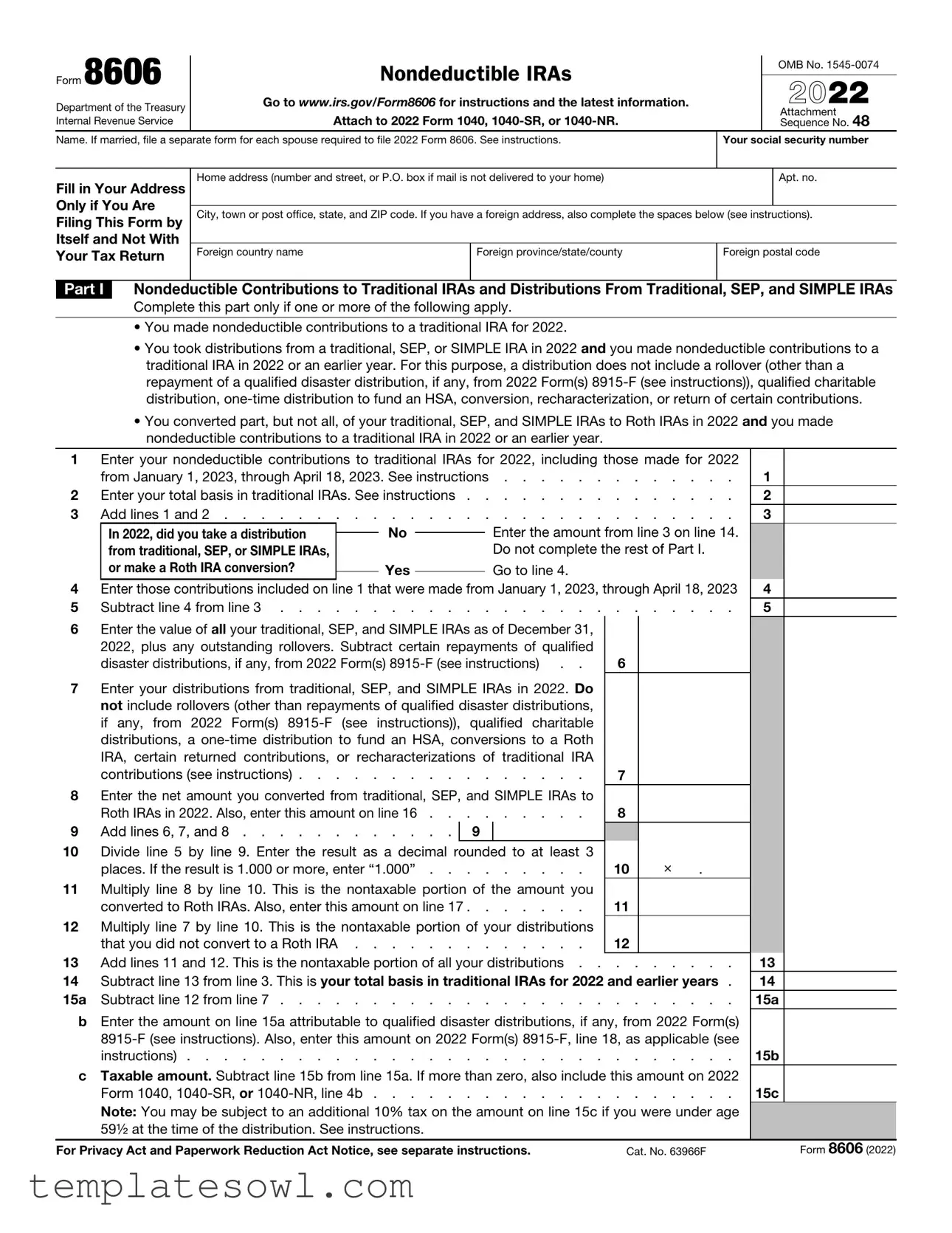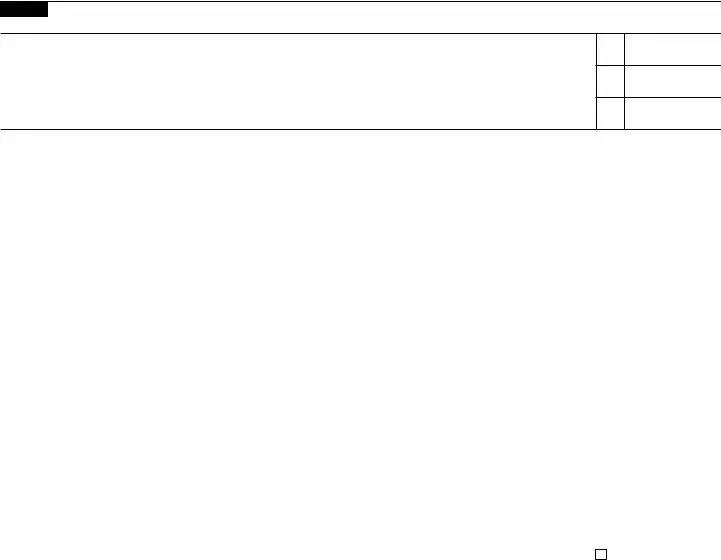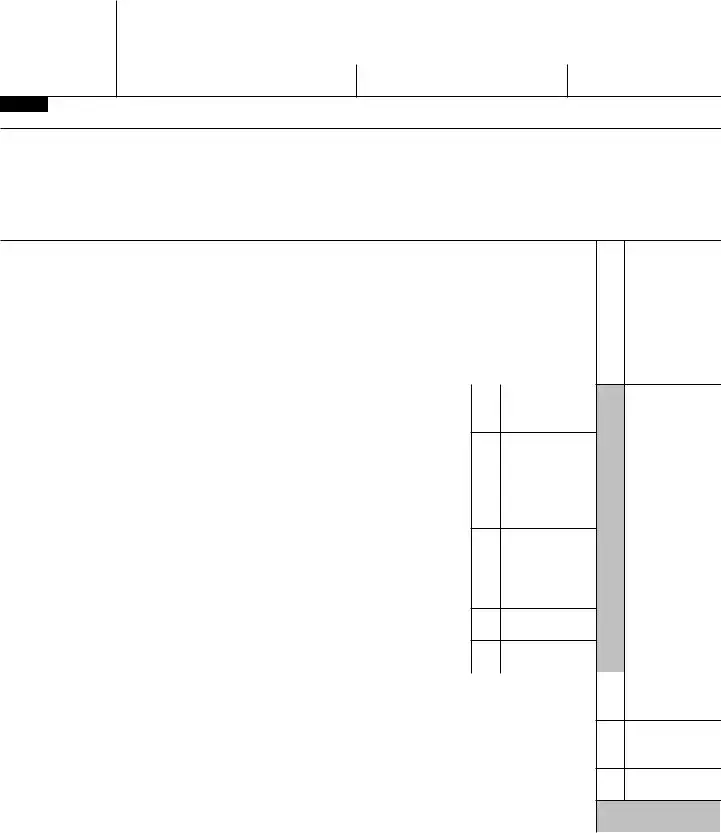|
Form 8606 |
|
Nondeductible IRAs |
|
|
OMB No. 1545-0074 |
|
|
|
|
|
|
|
|
2022 |
|
Department of the Treasury |
Go to www.irs.gov/Form8606 for instructions and the latest information. |
|
|
|
|
Attach to 2022 Form 1040, 1040-SR, or 1040-NR. |
|
|
Attachment |
|
Internal Revenue Service |
|
|
|
Sequence No. 48 |
|
Name. If married, file a separate form for each spouse required to file 2022 Form 8606. See instructions. |
Your social security number |
|
|
|
|
|
|
|
Fill in Your Address |
Home address (number and street, or P.O. box if mail is not delivered to your home) |
|
|
Apt. no. |
|
Only if You Are |
|
|
|
|
|
|
City, town or post office, state, and ZIP code. If you have a foreign address, also complete the spaces below (see instructions). |
|
Filing This Form by |
|
Itself and Not With |
|
|
|
|
|
|
Foreign country name |
Foreign province/state/county |
Foreign postal code |
|
Your Tax Return |
Part I Nondeductible Contributions to Traditional IRAs and Distributions From Traditional, SEP, and SIMPLE IRAs
Complete this part only if one or more of the following apply.
• You made nondeductible contributions to a traditional IRA for 2022.
• You took distributions from a traditional, SEP, or SIMPLE IRA in 2022 and you made nondeductible contributions to a traditional IRA in 2022 or an earlier year. For this purpose, a distribution does not include a rollover (other than a repayment of a qualified disaster distribution, if any, from 2022 Form(s) 8915-F (see instructions)), qualified charitable distribution, one-time distribution to fund an HSA, conversion, recharacterization, or return of certain contributions.
• You converted part, but not all, of your traditional, SEP, and SIMPLE IRAs to Roth IRAs in 2022 and you made nondeductible contributions to a traditional IRA in 2022 or an earlier year.
1 |
Enter your nondeductible contributions to traditional IRAs for 2022, including those made for 2022 |
|
|
|
from January 1, 2023, through April 18, 2023. See instructions |
. . . . . . . . . . . . . |
1 |
|
2 |
Enter your total basis in traditional IRAs. See instructions . . |
. . . . . . . . . . . . . |
2 |
|
3 |
Add lines 1 and 2 |
. . . . . . . . . . . . . |
3 |
|
|
In 2022, did you take a distribution |
|
No |
|
|
Enter the amount from line 3 on line 14. |
|
|
|
|
|
|
|
|
from traditional, SEP, or SIMPLE IRAs, |
|
|
|
|
Do not complete the rest of Part I. |
|
|
4 |
or make a Roth IRA conversion? |
|
Yes |
|
|
Go to line 4. |
|
|
|
|
|
|
Enter those contributions included on line 1 that were made from January 1, 2023, through April 18, 2023 |
4 |
|
5 |
Subtract line 4 from line 3 |
. . . . . . . . . . . . . |
5 |
|
6Enter the value of all your traditional, SEP, and SIMPLE IRAs as of December 31, 2022, plus any outstanding rollovers. Subtract certain repayments of qualified
disaster distributions, if any, from 2022 Form(s) 8915-F (see instructions) . . |
6 |
7Enter your distributions from traditional, SEP, and SIMPLE IRAs in 2022. Do not include rollovers (other than repayments of qualified disaster distributions, if any, from 2022 Form(s) 8915-F (see instructions)), qualified charitable distributions, a one-time distribution to fund an HSA, conversions to a Roth
IRA, certain returned contributions, or recharacterizations of traditional |
IRA |
|
contributions (see instructions) |
. |
7 |
8Enter the net amount you converted from traditional, SEP, and SIMPLE IRAs to
Roth IRAs in 2022. Also, enter this amount on line 16 . . |
. . . . . . . |
8 |
|
9 Add lines 6, 7, and 8 |
9 |
|
|
|
10Divide line 5 by line 9. Enter the result as a decimal rounded to at least 3
places. If the result is 1.000 or more, enter “1.000” |
10 |
× |
. |
11Multiply line 8 by line 10. This is the nontaxable portion of the amount you
converted to Roth IRAs. Also, enter this amount on line 17 |
11 |
12Multiply line 7 by line 10. This is the nontaxable portion of your distributions
|
that you did not convert to a Roth IRA |
12 |
|
|
13 |
Add lines 11 and 12. This is the nontaxable portion of all your distributions |
|
13 |
14 |
Subtract line 13 from line 3. This is your total basis in traditional IRAs for 2022 and earlier years . |
|
14 |
15a |
Subtract line 12 from line 7 |
15a |
bEnter the amount on line 15a attributable to qualified disaster distributions, if any, from 2022 Form(s) 8915-F (see instructions). Also, enter this amount on 2022 Form(s) 8915-F, line 18, as applicable (see
cTaxable amount. Subtract line 15b from line 15a. If more than zero, also include this amount on 2022 Form 1040, 1040-SR, or 1040-NR, line 4b . . . . . . . . . . . . . . . . . . . . 15c Note: You may be subject to an additional 10% tax on the amount on line 15c if you were under age 59½ at the time of the distribution. See instructions.
For Privacy Act and Paperwork Reduction Act Notice, see separate instructions. |
Cat. No. 63966F |
Form 8606 (2022) |
Part II 2022 Conversions From Traditional, SEP, or SIMPLE IRAs to Roth IRAs
Complete this part if you converted part or all of your traditional, SEP, and SIMPLE IRAs to a Roth IRA in 2022.
16If you completed Part I, enter the amount from line 8. Otherwise, enter the net amount you converted
from traditional, SEP, and SIMPLE IRAs to Roth IRAs in 2022 . . . . . . . . . . . . .
17If you completed Part I, enter the amount from line 11. Otherwise, enter your basis in the amount on
line 16 (see instructions) . . . . . . . . . . . . . . . . . . . . . . . . . .
18Taxable amount. Subtract line 17 from line 16. If more than zero, also include this amount on 2022 Form 1040, 1040-SR, or 1040-NR, line 4b . . . . . . . . . . . . . . . . . . . .
Part III Distributions From Roth IRAs
Complete this part only if you took a distribution from a Roth IRA in 2022. For this purpose, a distribution does not include a rollover (other than a repayment of a qualified disaster distribution (from 2022 Form(s) 8915-F (see instructions)), qualified charitable distribution, one-time distribution to fund an HSA, recharacterization, or return of certain contributions (see instructions).
19 |
Enter your total nonqualified distributions from Roth IRAs in 2022, including any qualified first-time |
|
|
|
homebuyer distributions, and any qualified disaster distributions from 2022 Form(s) 8915-F (see |
|
|
|
instructions) |
. . . . |
19 |
|
20 |
Qualified first-time homebuyer expenses (see instructions). Do not enter more than $10,000 reduced |
|
|
|
by the total of all your prior qualified first-time homebuyer distributions |
. . . . |
20 |
|
21 |
Subtract line 20 from line 19. If zero or less, enter -0- |
. . . . |
21 |
|
22 |
Enter your basis in Roth IRA contributions (see instructions). If line 21 is zero, stop here . |
. . . . |
22 |
|
23 |
Subtract line 22 from line 21. If zero or less, enter -0- and skip lines 24 and 25. If more than zero, you |
|
|
|
may be subject to an additional tax (see instructions) |
. . . . |
23 |
|
24 |
Enter your basis in conversions from traditional, SEP, and SIMPLE IRAs and rollovers from qualified |
|
|
|
retirement plans to a Roth IRA. See instructions |
. . . . |
24 |
|
25a |
Subtract line 24 from line 23. If zero or less, enter -0- and skip lines 25b and 25c . . . |
. . . . |
25a |
|
b Enter the amount on line 25a attributable to qualified disaster distributions, if any, from 2022 Form(s) |
|
|
|
8915-F (see instructions). Also, enter this amount on 2022 Form(s) 8915-F, line 19, as applicable (see |
|
|
|
instructions) |
. . . . |
25b |
|
c |
Taxable amount. Subtract line 25b from line 25a. If more than zero, also include this amount on 2022 |
|
|
|
Form 1040, 1040-SR, or 1040-NR, line 4b |
. . . . |
25c |
|
Sign Here Only if You |
Under penalties of perjury, I declare that I have examined this form, including accompanying attachments, and to the best of my knowledge and |
Are Filing This Form |
belief, it is true, correct, and complete. Declaration of preparer (other than taxpayer) is based on all information of which preparer has any knowledge. |
|
|
|
|
|
|
|
|
|
|
by Itself and Not With |
|
|
|
|
|
|
|
|
|
|
Your Tax Return |
|
|
|
|
|
|
|
|
|
|
|
Your signature |
|
|
|
|
Date |
|
|
|
|
|
|
|
|
|
|
|
|
|
|
|
Paid |
|
Print/Type preparer’s name |
Preparer’s signature |
Date |
|
|
|
Check |
if |
PTIN |
|
|
|
|
|
|
|
|
|
|
|
|
|
|
|
|
|
|
|
self-employed |
|
Preparer |
|
|
|
|
|
|
|
|
|
|
|
|
|
|
|
|
|
|
|
|
Firm’s name |
|
|
|
|
|
|
|
Firm’s EIN |
|
Use Only |
|
|
|
|
|
|
|
|
Firm’s address |
|
|
|
|
|
Phone no. |
|
|
|
|
|
|
|
|
|
|
|
|
|
|
|
|
|
|
|
|
|
Form 8606 (2022) |


